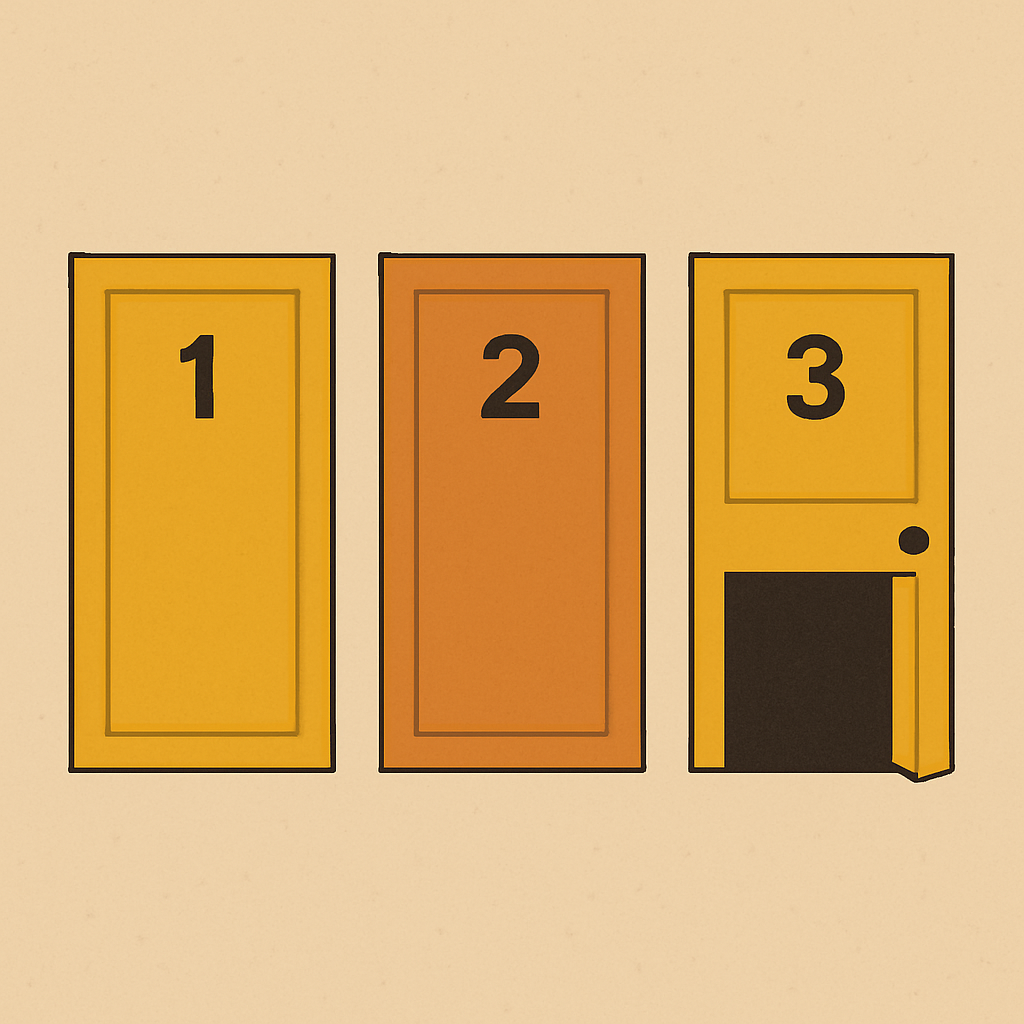Don't Open Door Number 1! The Statistical Mystery That Baffles the World

When the contestant picks a door, the host opens another... and the universe of probability starts to shake. We're talking about the Monty Hall problem, a mathematical puzzle that defies intuition and reveals how little we truly understand statistics.
What is the problem?
Based on the American game show Let's Make a Deal, the setup goes like this:
- There are three doors.
- Behind one is a car. The other two hide goats.
- You pick a door (say, door 1).
- The host, who knows where the prize is, opens another door (say, door 3) and shows a goat.
- Then he asks you: "Do you want to switch to door 2?"
Intuition says it’s 50-50. But it’s not.
The correct answer almost no one accepts
The probability that the car is behind your initial choice is 1/3. The probability that it’s behind one of the other two is 2/3. When Monty opens a door with a goat, the full 2/3 probability transfers to the other unopened door. Switching doubles your chances of winning.
This result is so counterintuitive that even professional mathematicians have wrongly argued there's no difference. Marilyn vos Savant, considered one of the smartest people in the world, explained it correctly in Parade Magazine... and received thousands of letters saying she was wrong.
Why is it so hard to grasp?
The human brain doesn’t understand conditional probability naturally. We think of percentages as fixed, forgetting how new evidence changes the rules of the game. It’s the same reason we get confused by medical tests, forecasts, and risk decisions.
A real-life experiment
In one study, when students were given the problem, only 10% chose to switch. After the logic was explained, that percentage multiplied. But it takes seeing it repeated to truly believe it.
What the problem reveals
Monty Hall isn’t just a game. It’s a mirror. It reflects how we prefer intuition over logic, and how math education often fails to teach the why, not just the how